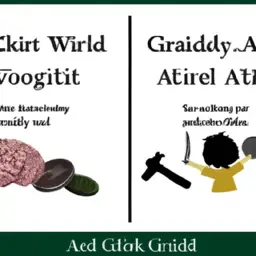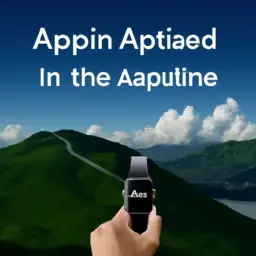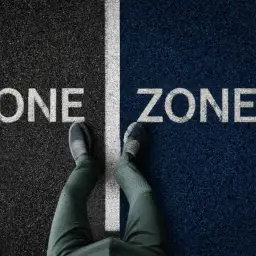Are you struggling to find the best approach to academic success? With so many learning methods available, it can be overwhelming to choose the right one for you.
Two popular approaches are traditional learning and grit-based learning. In this article, we will provide a definitive comparison of these two methods to help you make an informed decision.
Traditional learning methods are the most common approach to education. This method involves attending lectures, taking notes, completing assignments, and studying for exams. It is a structured approach that follows a set curriculum and is often led by a teacher or professor.
On the other hand, grit-based learning is a newer approach that focuses on developing perseverance and resilience. This method emphasizes the importance of effort and hard work in achieving academic success.
By understanding the differences between these two approaches, you can determine which one is best suited for your learning style and goals.
Key Takeaways
- Traditional learning involves lectures, assignments, and exams, while grit-based learning focuses on perseverance and resilience.
- Both approaches have their advantages and disadvantages, and the effectiveness of each depends on individual student and learning style.
- Traditional learning offers familiarity, personal interaction, structured curriculum, and standardized testing, while grit-based learning promotes resilience, personal growth, and a stronger sense of purpose and motivation.
- Choosing between the two approaches depends on learning preferences and goals, and strategies for cultivating grit include setting challenging goals, focusing on effort, practicing deliberately, creating supportive environment, using positive self-talk, finding a mentor, celebrating small successes, and accepting feedback.
Understanding Traditional Learning Methods
Let’s take a closer look at how traditional learning methods, like lectures and textbooks, have been the go-to approach for academic success in the past.
Lectures have been the staple of education for centuries, where students sit in a classroom and listen to a teacher impart knowledge. This method is effective for some students who learn best by listening and taking notes. However, it may not be the best approach for all students as it relies heavily on memorization rather than critical thinking.
On the other hand, hands-on learning provides a more interactive approach to education, allowing students to engage in the subject matter and apply what they have learned. This method is particularly effective for students who prefer a more kinesthetic learning style. However, it can be difficult to implement in larger classrooms or for subjects that require more theoretical knowledge.

Ultimately, the debate between lectures vs. hands-on learning and memorization vs. critical thinking continues to be a topic of discussion in the education community.
What is Grit-Based Learning?
Grit-based learning is an approach that focuses on perseverance and determination to achieve academic goals. It emphasizes the importance of long-term effort and the ability to overcome challenges in order to succeed. It has gained popularity in recent years due to its effectiveness in improving academic performance and promoting personal growth.
Here are some benefits and techniques of grit-based learning:
-
Benefits:
-
Increased motivation and engagement
-
Improved academic achievement
-
Promotes resilience and perseverance
-
Encourages personal growth and development
-
Techniques:
-
Setting challenging and realistic goals
-
Focusing on effort rather than talent
-
Emphasizing the process rather than the outcome
-
Developing a growth mindset
Developing grit requires commitment and effort. Here are some tips and strategies to help you cultivate grit:
-
Tips:
-
Embrace challenges and setbacks
-
Cultivate a growth mindset
-
Find a mentor or role model
-
Celebrate small successes
-
Strategies:
-
Practice deliberate practice
-
Create a supportive environment
-
Develop a positive self-talk
-
Accept feedback and criticism as opportunities for growth.
Overall, grit-based learning is a powerful approach that can help students achieve their academic and personal goals. By developing grit, students can overcome challenges, persist through difficulties, and ultimately succeed in their pursuits.
Comparing Effectiveness for Academic Success
You might be wondering which approach to learning is more effective in achieving your academic goals: traditional learning or grit-based learning? The answer to this question lies in the effectiveness evaluation and the impact on student motivation.
Traditional learning typically follows a structured curriculum with set deadlines for assignments and tests. This approach is effective for students who thrive on structure and have a strong desire to follow a set path towards academic success.
On the other hand, grit-based learning focuses on developing a growth mindset and building resilience through failure. This approach prioritizes effort and perseverance over natural ability and talent. While this approach may not appeal to all students, it can be highly effective for those who struggle with motivation or who have a fear of failure.
Grit-based learning encourages students to take risks, learn from their mistakes, and keep pushing forward towards their academic goals. Ultimately, the effectiveness of each approach will depend on the individual student and their unique learning style.
Advantages of Traditional Learning
If you’re someone who thrives on routine and structure, then you’ll appreciate the advantages of going the traditional route when it comes to achieving academic success.
The classroom environment of traditional learning offers a sense of familiarity and predictability that can be comforting for students. Additionally, the teacher-student interaction is more personal and direct, allowing for questions and feedback to be addressed immediately.
Another advantage of traditional learning is the structured curriculum and standardized testing. A set curriculum ensures that all students are learning the same material and are on track for success. Standardized testing allows for a clear assessment of a student’s knowledge and progress, and also prepares them for future academic challenges such as college entrance exams.
These factors can give students a sense of security and confidence in their academic abilities.
Advantages of Grit-Based Learning
Imagine being able to develop a growth mindset that allows you to persevere through challenges and setbacks, ultimately leading to a stronger sense of self-efficacy and achievement. This is the core of grit-based learning, a method that emphasizes developing perseverance and resilience.
In contrast to traditional learning, where the focus is on acquiring information and memorizing facts, grit-based learning places a higher value on the process of learning itself.
One of the advantages of grit-based learning is that it teaches students how to overcome obstacles. Instead of giving up when things get tough, students learn to push through difficulties and find creative solutions to problems. This approach fosters a sense of self-reliance and independence, which can be especially valuable in the real world.
Additionally, grit-based learning techniques can help students develop a stronger sense of purpose and motivation. By focusing on the process of learning and the effort required to achieve success, students are more likely to feel invested in their education and to take ownership of their own learning.
Which Approach is Right for You?
Discovering which learning approach suits you best can be an exciting journey of self-discovery and growth. It requires self-reflection and an understanding of your learning preferences.
If you prefer structure and guidance, traditional learning might be the right approach for you. Traditional learning provides a set curriculum and a clear path to follow. It also involves face-to-face interaction with teachers and peers, which can be beneficial for those who thrive in a social learning environment.
On the other hand, if you’re someone who prefers a more personalized and flexible approach, grit-based learning may be the better option. Grit-based learning allows you to tailor your education to your interests and goals. It’s also self-directed, which means that you have the freedom to learn at your own pace and in your own way. However, it requires a high level of motivation and discipline to succeed.
Ultimately, the key is to identify your learning preferences and choose the approach that aligns with your goals and values.
Frequently Asked Questions
How does grit-based learning impact a student’s emotional well-being?
When it comes to grit-based learning, the importance of resilience can’t be overstated. By cultivating the ability to persevere even in the face of challenge and failure, students are better equipped to handle the emotional ups and downs that come with academic pursuits.
Additionally, mindfulness practices can play a key role in promoting emotional well-being in the context of grit-based learning. By developing a greater awareness of their thoughts and emotions, students can better regulate their reactions and maintain a sense of balance even in the midst of stress.
Ultimately, the combination of resilience and mindfulness can help students not only succeed academically but also lead happier, more fulfilling lives overall.
Can traditional learning methods be adapted to incorporate grit-based principles?
Adapting traditional learning methods to incorporate grit-based principles can be challenging, but it’s possible.
One of the main implementation challenges is that traditional methods often prioritize memorization and rote learning, whereas grit-based learning emphasizes resilience, perseverance, and growth mindset.
One way to adapt traditional methods is to incorporate more project-based assignments, allowing students to develop problem-solving skills and work collaboratively.
Another strategy is to provide more opportunities for students to receive feedback and reflect on their learning process, helping them develop a growth mindset.
Ultimately, adapting traditional methods to include grit-based principles requires a shift in mindset from a focus on grades and test scores to a focus on learning and growth.
Are there any disadvantages to grit-based learning?
When it comes to grit-based learning, there are certainly some potential downsides to consider.
For one thing, it can be easy to burn out when you’re focused on perseverance and pushing yourself to the limit all the time. It’s important to make sure you’re also prioritizing self-care and taking breaks when you need them.
Additionally, it’s worth considering whether grit-based learning is accessible to everyone, or whether it’s only really possible for those with certain privileges and advantages. Systemic barriers can make it much harder for some students to succeed, regardless of how gritty they might be.
Ultimately, while grit can be a valuable tool for academic success, it’s important to approach it with a critical eye and make sure you’re not sacrificing your health or ignoring systemic issues along the way.
How does one measure academic success in the context of grit-based learning?
When it comes to measuring success in grit-based learning, it’s important to understand that traditional methods may not be sufficient.
Grit-based assessment focuses on more than just grades or test scores; it takes into account factors like perseverance, determination, and resilience.
This means that success is measured not only by academic achievement, but also by personal growth and development.
To measure success in this context, you might track progress in areas like goal-setting, self-motivation, and overcoming obstacles.
Ultimately, the goal of grit-based learning is to help students become more resilient and self-directed learners, which can lead to greater success both in and out of the classroom.
Are there any successful examples of institutions that have integrated both traditional and grit-based learning approaches?
If you’re wondering whether institutions have successfully integrated both traditional and grit-based learning approaches, the answer is yes. This hybrid approach has been gaining popularity in recent years as educators and institutions recognize the benefits of integration.
By combining the structure and foundational knowledge of traditional learning with the perseverance and self-motivation of grit-based learning, students are better equipped to handle the challenges of academic success. Some examples of successful integration include schools that incorporate project-based learning and self-directed learning, as well as programs that offer personalized learning plans and opportunities for students to develop their own learning goals.
By embracing both approaches, institutions are able to provide a well-rounded education that prepares students not only for academic success, but also for success in life.
Conclusion
So, which learning approach should you choose? Ultimately, it depends on your individual learning style and goals. If you thrive in a structured environment and prefer a clear path to success, traditional learning may be the way to go.
On the other hand, if you’re willing to embrace challenge and enjoy pushing yourself to achieve more, grit-based learning may be a better fit for you.
Regardless of which approach you choose, remember that success in academics (and in life) isn’t just about the method of learning, but also about perseverance, determination, and a willingness to learn from failure. By combining the best aspects of both traditional and grit-based learning, you can create a personalized approach that helps you achieve your goals and reach your full potential.
So, keep pushing yourself, stay motivated, and don’t give up on your dreams of academic success.




















































































































